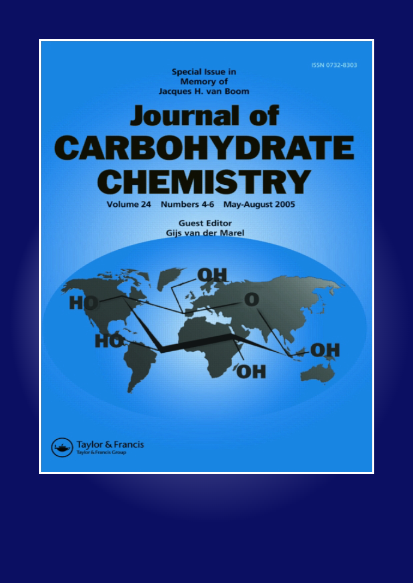Insight into interactions between cellulose model D-cellobiose and fourteen selected sodium salts using FT-IR, thermogravimetry, and computational analysis tools
IF 2.2
4区 化学
Q4 BIOCHEMISTRY & MOLECULAR BIOLOGY
引用次数: 0
Abstract
Understanding intermolecular interactions between cellulose and metal salts, and in particularly with anions, is crucial in development of cellulose composites and processing methods. Intermolecular interactions between cellulose model compound D-cellobiose and 14 sodium salts were evaluated using Fourier-Transform Infrared (FT-IR) spectroscopy, thermogravimetric (TG), and computational analysis tools. In FT-IR, shifts in 10 distinct bands in the D-cellobiose spectra were monitored to evaluate interactions between D-cellobiose and sodium salts. Na2B4O3 and Na3PO4 caused the highest total shifts of 61.85 and 34.08 cm−1, respectively. Mixing with salt caused lowering the initial decomposition temperatures in 10 out of the 14 salts. In density functional theory (DFT) study, Na2B4O7 and D-cellobiose mixture showed negative binding energies of −11.18, −25.3, −30.9, and −12.2 kJ/mol in approaching α- and β-D-cellobiose from up and down faces. In addition, FT-IR data showed the strong interaction between borate anion and carbohydrate, where mixing Na2B4O7 with D-cellobiose resulted in the largest total shift of 61.85 cm−1 in the ten IR bands monitored. The strong interactions between Na2B4O7 and D-cellobiose were explained as a result of Lewis acidity of boron, as well as multiple B and O atoms present in the anion and strong hydrogen bonding and dipolar interactions between B and O atoms.
深入了解纤维素模型d -纤维素二糖和14种选定的钠盐之间的相互作用,使用FT-IR,热重法和计算分析工具
了解纤维素和金属盐之间的分子间相互作用,特别是与阴离子的相互作用,对纤维素复合材料和加工方法的发展至关重要。利用傅里叶变换红外光谱(FT-IR)、热重(TG)和计算分析工具评估了纤维素模型化合物d -纤维素二糖与14钠盐之间的分子间相互作用。在FT-IR中,监测了d -纤维素二糖光谱中10个不同波段的变化,以评估d -纤维素二糖与钠盐之间的相互作用。Na2B4O3和Na3PO4的总位移最大,分别为61.85和34.08 cm−1。与盐混合导致14种盐中有10种的初始分解温度降低。在密度泛函理论(DFT)研究中,Na2B4O7和d -纤维素二糖混合物从上下面接近α-和β- d -纤维素二糖时,其结合能分别为- 11.18、- 25.3、- 30.9和- 12.2 kJ/mol。此外,FT-IR数据显示硼酸盐阴离子与碳水化合物之间存在强烈的相互作用,其中Na2B4O7与d -纤维素二糖混合导致10个IR波段最大的总位移为61.85 cm−1。Na2B4O7与d -纤维素糖之间的强相互作用解释为硼的Lewis酸性,阴离子中存在多个B和O原子,B和O原子之间存在强氢键和偶极相互作用。
本文章由计算机程序翻译,如有差异,请以英文原文为准。
求助全文
约1分钟内获得全文
求助全文
来源期刊

Journal of Carbohydrate Chemistry
化学-生化与分子生物学
CiteScore
2.10
自引率
0.00%
发文量
20
审稿时长
1 months
期刊介绍:
The Journal of Carbohydrate Chemistry serves as an international forum for research advances involving the chemistry and biology of carbohydrates. The following aspects are considered to fall within the scope of this journal:
-novel synthetic methods involving carbohydrates, oligosaccharides, and glycoconjugates-
the use of chemical methods to address aspects of glycobiology-
spectroscopic and crystallographic structure studies of carbohydrates-
computational and molecular modeling studies-
physicochemical studies involving carbohydrates and the chemistry and biochemistry of carbohydrate polymers.
 求助内容:
求助内容: 应助结果提醒方式:
应助结果提醒方式:


